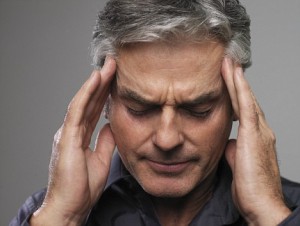 Our inner ear is important both for hearing and balance but more often than not having a flu or common cold can infect the sensitive structures inside your inner ear called labyrinth causing them to become irritated and swollen. Labyrinthitis is the swelling and irritation of the inner ear that can result to hearing loss and vertigo. Studies show that approximately one in six people who visited their doctors with symptoms of vertigo had Labyrinthitis where adults from ages 30 to 60 years old are most likely to suffer from viral Labyrinthitis while the less common bacterial Labyrinthitis are common among children under two years old.
Our inner ear is important both for hearing and balance but more often than not having a flu or common cold can infect the sensitive structures inside your inner ear called labyrinth causing them to become irritated and swollen. Labyrinthitis is the swelling and irritation of the inner ear that can result to hearing loss and vertigo. Studies show that approximately one in six people who visited their doctors with symptoms of vertigo had Labyrinthitis where adults from ages 30 to 60 years old are most likely to suffer from viral Labyrinthitis while the less common bacterial Labyrinthitis are common among children under two years old.
Vertigo and the Labyrinth
As the name of the condition entails, the labyrinth is the deepest part of the ear unique for its network of adjoined fluid-filled sacs and tubes enveloped by a thick bone positioned near the base of the skull. Although it is less than a half inch (1.25 cm) across, the labyrinth accommodates two vital organs – the snail-shell shaped cochlea which sends sounds to the brain and is responsible for hearing and the vestibular system that sends information to the brain about the head’s position and movement necessary for your sense of balance.
Causes of Labyrinthitis
Generally, Labyrinthitis is caused by a virus and sometimes by bacteria. While this condition can disappear within a few weeks, some patients report symptoms lingering for months. Recent viral illness like respiratory tract infection may put a person at a higher risk of Labyrinthitis. The following are common factors that can put you at risk for Labyrinthitis:
- Viral infection of the vestibular nerve or of the chest, nose, mouth and airways that spreads to the inner ear (e.g. infection with the herpes virus, common cold or flu)
- Bacterial infection, which is much less common and less serious (e.g. meningitis, middle ear infection)
- Drinking large amounts of alcohol
- Smoking
- Fatigue and Stress
- History of allergies
- Using certain prescription or nonprescription drugs (such as aspirin)
Symptoms of Labyrinthitis
The main symptom of Labyrinthitis is vertigo – feeling like the room is spinning or like you are spinning in the room, or it can be just a sense of imbalance and associated with nausea, vomiting and ringing in one or both ears especially in severe cases. While this condition does not involve pain, patients report ringing or buzzing in the affected ear and in severe cases may result to a sudden loss of hearing. Symptoms of Labyrinthitis may begin to fade after a few weeks, but can pop in again when you move your head suddenly. So as to avoid serious complications like permanent hearing loss, the following are common symptoms which need to be monitored:
- Loss of balance or fainting
- Nausea and vomiting
- Tinnitus (ringing or buzzing in your ear)
- Loss of hearing in the high-frequency range in one ear
- Difficulty focusing eyes or double vision
- Slurred speech
- Fever and convulsions
Treatment for Labyrinthitis
An ear examination may not be enough in diagnosing Labyrinthitis, so a complete physical examination should be performed. There are several tests that can rule our other conditions which have similar symptoms to Labyrinthitis (stroke, brain tumor). These tests may include hearing and blood tests, CT or MRI scan of the head, EEG and ENG.
While the condition normally goes away on its own, it is important to seek medical attention immediately especially if serious symptoms lasts for months. Physician can help relieve the symptoms with medications like corticosteroids, sedatives, antihistamines, medications that can reduce dizziness and nausea, and antibiotics if there is an active infection.
If vertigo continues for a long time, physical and occupational therapists can help improve balance. Physiotherapists recommend several techniques to relieve vertigo like the vestibular rehabilitation therapy or VRT to reduce residual dizziness and help the brain cope with changing signal from the vestibular system. The rehabilitation exercise that physical and occupational therapists recommend involve movements specifically designed to challenge the vestibular system in terms of postural control, balance training, relaxation, and more.

Published by